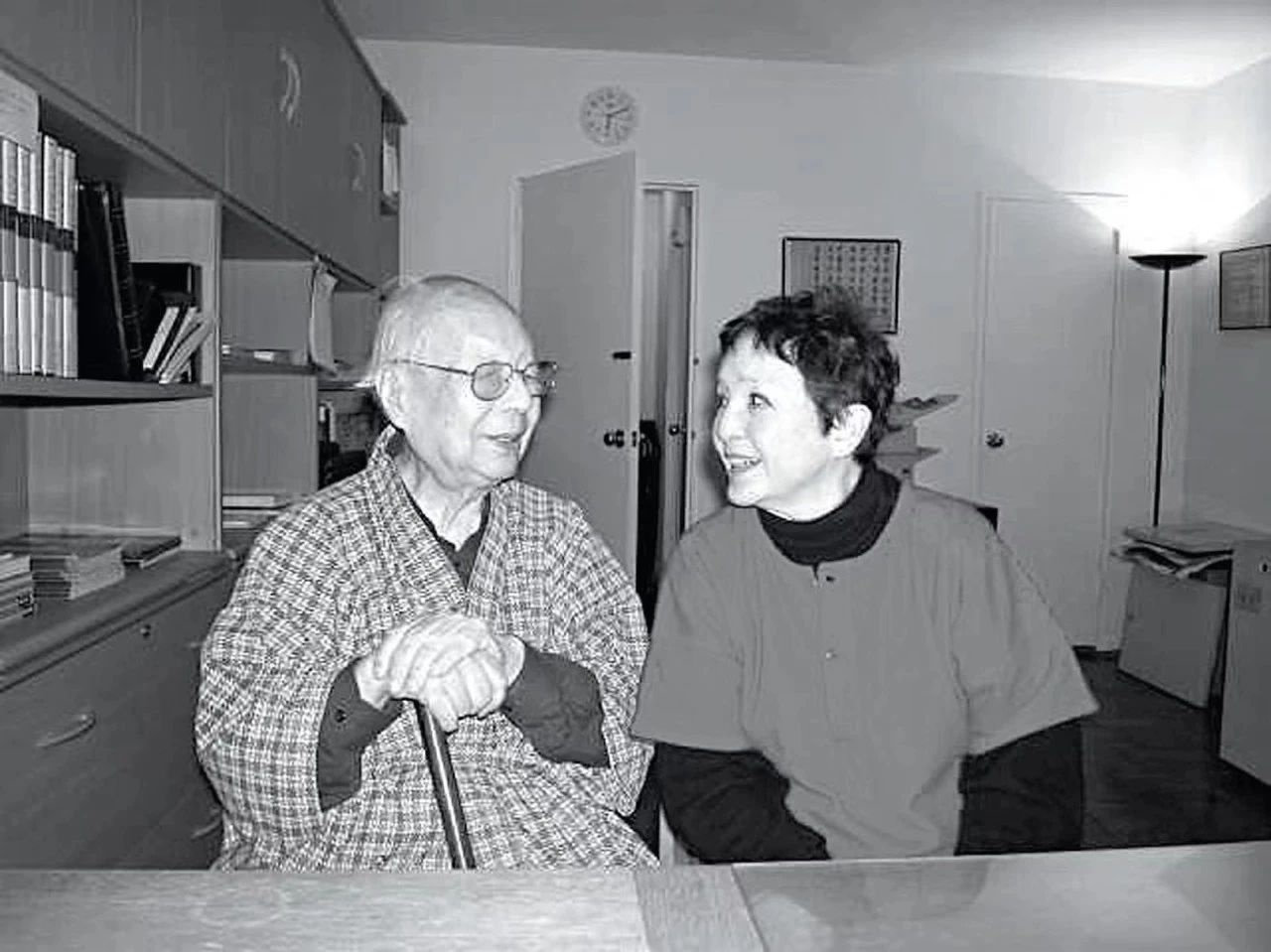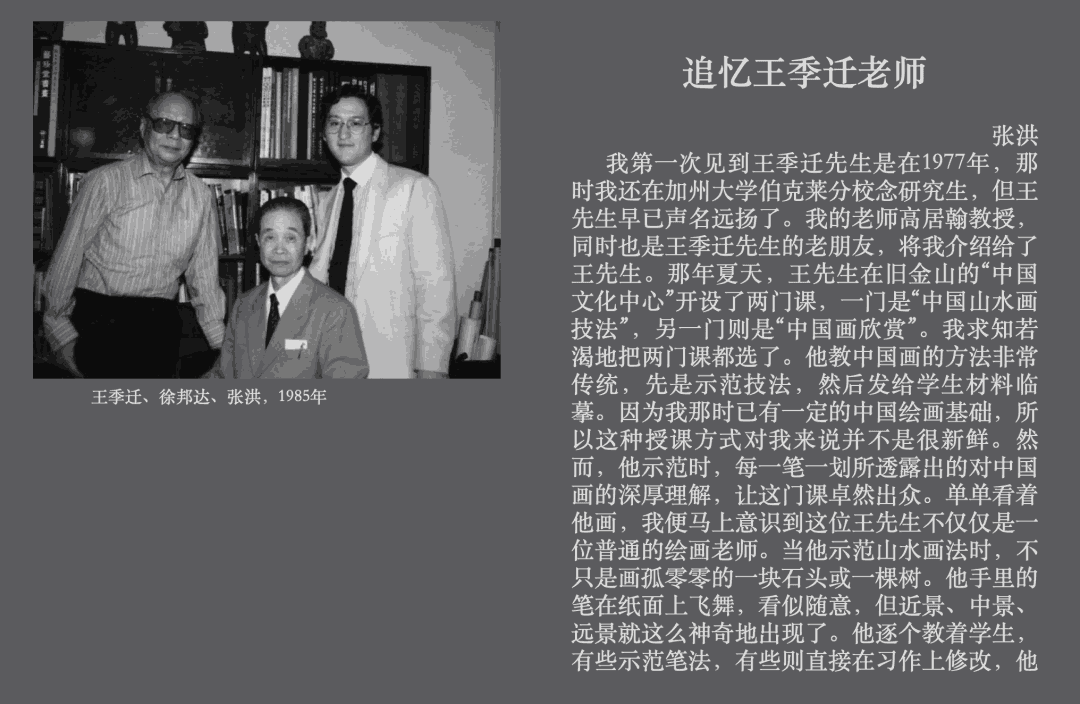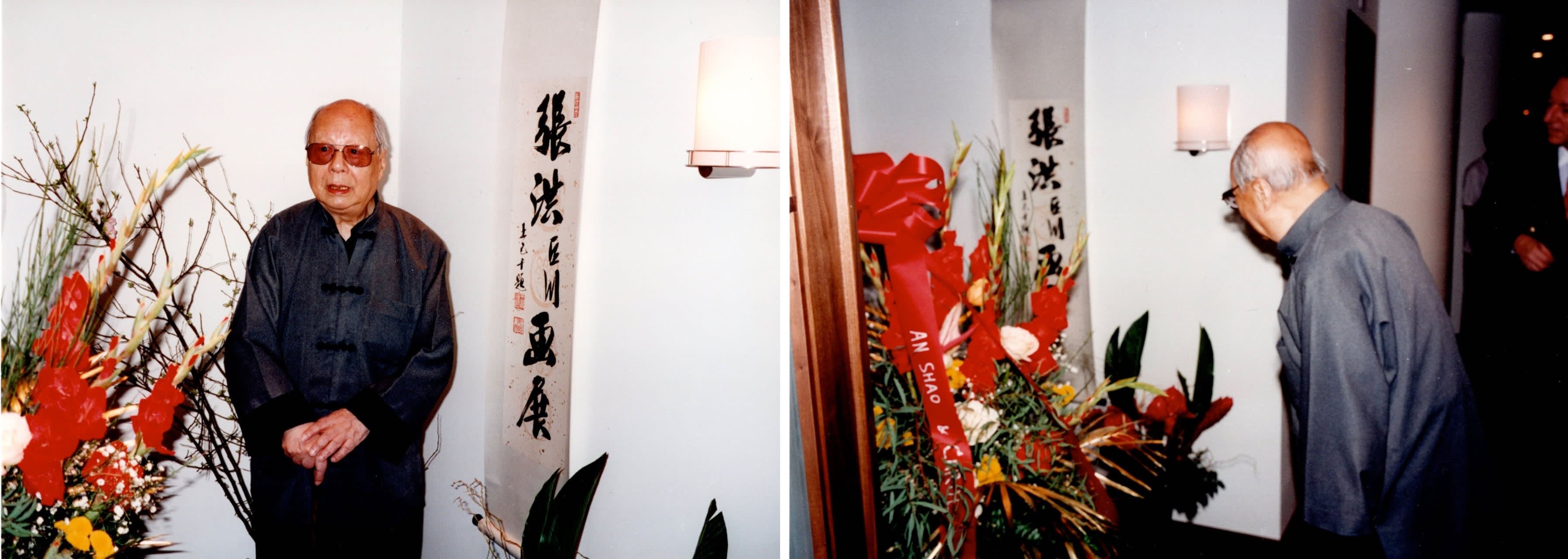With our current exhibition, "The Mountains Show and Hide: Color in the Landscape Paintings of Arnold Chang," Fu Qiumeng Fine Art would like to recommend an art book that explores Chinese calligraphy and painting in depth, “C.C. Wang Reflects on Painting: Definition of Brushwork-Oriented Criteria in Chinese Literati Aesthetics.”

C.C.Wang and Joan Stanley-Baker
Authored by Joan Stanley-Baker, a renowned contemporary art historian, this book engages in a novel dialogue with the famous collector, connoisseur, and artist of Chinese painting and calligraphy, C.C. Wang. It delves into the analysis of the illustrious masters throughout the history of Chinese calligraphy and painting, exploring deeply the styles, bimo (brushwork) characteristics, techniques, composition, and other aspects of traditional Chinese calligraphy and painting. At the same time, the book records C.C. Wang's unique insights on the appreciation of bimo.

Book Pages
In "Remembering the Master," Arnold Chang recalled his over twenty years of studying Chinese calligraphy, painting, and connoisseurship with C.C. Wang, who was not only his teacher, but also a mentor, and a friend. Their encounter dates back to 1977 when Chang, a graduate student at the University of California, Berkeley, was introduced to Wang by his professor, James Cahill. Impressed by C.C. Wang’s teaching style and profound understanding of Chinese calligraphy and painting, Chang continued his studies with him. In 1979, Chang joined the Classical Chinese Painting Department at Sotheby's New York, where C.C. Wang happened to be the senior consultant. The auction house, with hundreds of Chinese paintings to appraise, provided an ideal platform for Chang to further practice his connoisseurship under C.C. Wang's guidance.

Through his interactions and learning experiences with C.C. Wang, Chang deeply understood that despite differences between connoisseurship and the craft of painting, they required mastery of the same visual language. Therefore, Chang persisted in his practice of traditional calligraphy and painting, a decision that significantly influenced his future artistic creations. As Chang recalled, C.C. Wang, even in his seventies, never ceased to innovate. He constantly experimented with various techniques and visual effects. Although C.C. Wang has already fully absorbed the traditional characteristics of Chinese landscape paintings, he continued to extend his exploration in multiple directions, attempting to revitalize traditional calligraphy and painting with contemporary elements.

Influenced by C.C. Wang's insights and concepts regarding traditional calligraphy and painting, Chang continued his exploration of Chinese calligraphy and painting along the path laid out by his teacher. C.C. Wang pointed out that ancient artists had a great understanding of the quintessence of abstraction in bimo, but not necessarily in terms of color application and pictorial composition; there were still areas to be explored, which was exactly what he has been doing in his later years. Inspired by Wang, when Chang realized that the element of color and composition were treated differently in Chinese painting and Western painting, he began his decade-long exploration of color.
Color, a fundamental element in Western painting, was often an afterthought in Chinese painting. Seeking to initiate a dialogue with traditional art under the context of contemporary art, Chang integrated color into his landscape painting. By reconstructing the relationship between lines and color gradations, he broke away from traditional compositions and forms of expression. Chang's ongoing exploration of color is not only his reflection on tradition and contemporaneity but also a continuation of his teacher C.C. Wang's creative and artistic thoughts.

Installation Photo of "The Mountains Show and Hide: Color in the Landscape Paintings of Arnold Chang," ©The FQM
The current exhibition also displays a piece of calligraphy by C.C. Wang titled "Exhibition of Paintings by Zhang Hong, inscribed by Wang Jiqian (C.C. Wang)." This small hanging scroll was a gift from C.C. Wang to his student Arnold Chang, commemorating and celebrating Chang's first solo exhibition at Kaikodo Gallery in New York in 1996. C.C. Wang did not indicate a date or exhibition location on the work intentionally, as he firmly believed that this scroll would continue to accompany Chang in his future exhibitions, witnessing his artistic journey. Now, twenty-eight years later, it reappears at Arnold Chang's second solo exhibition in New York!



